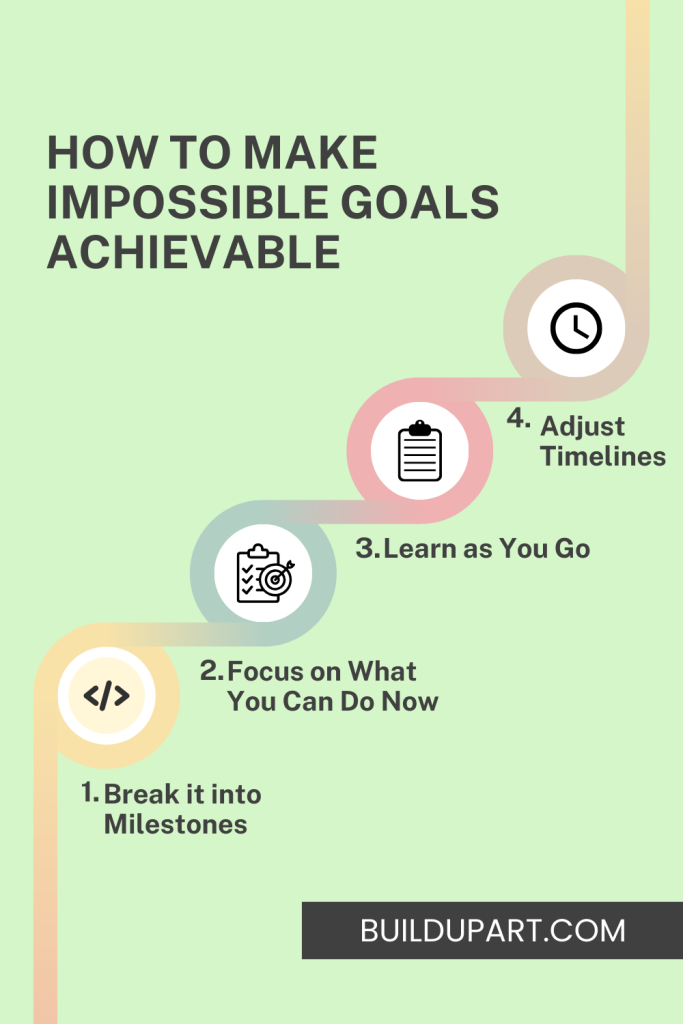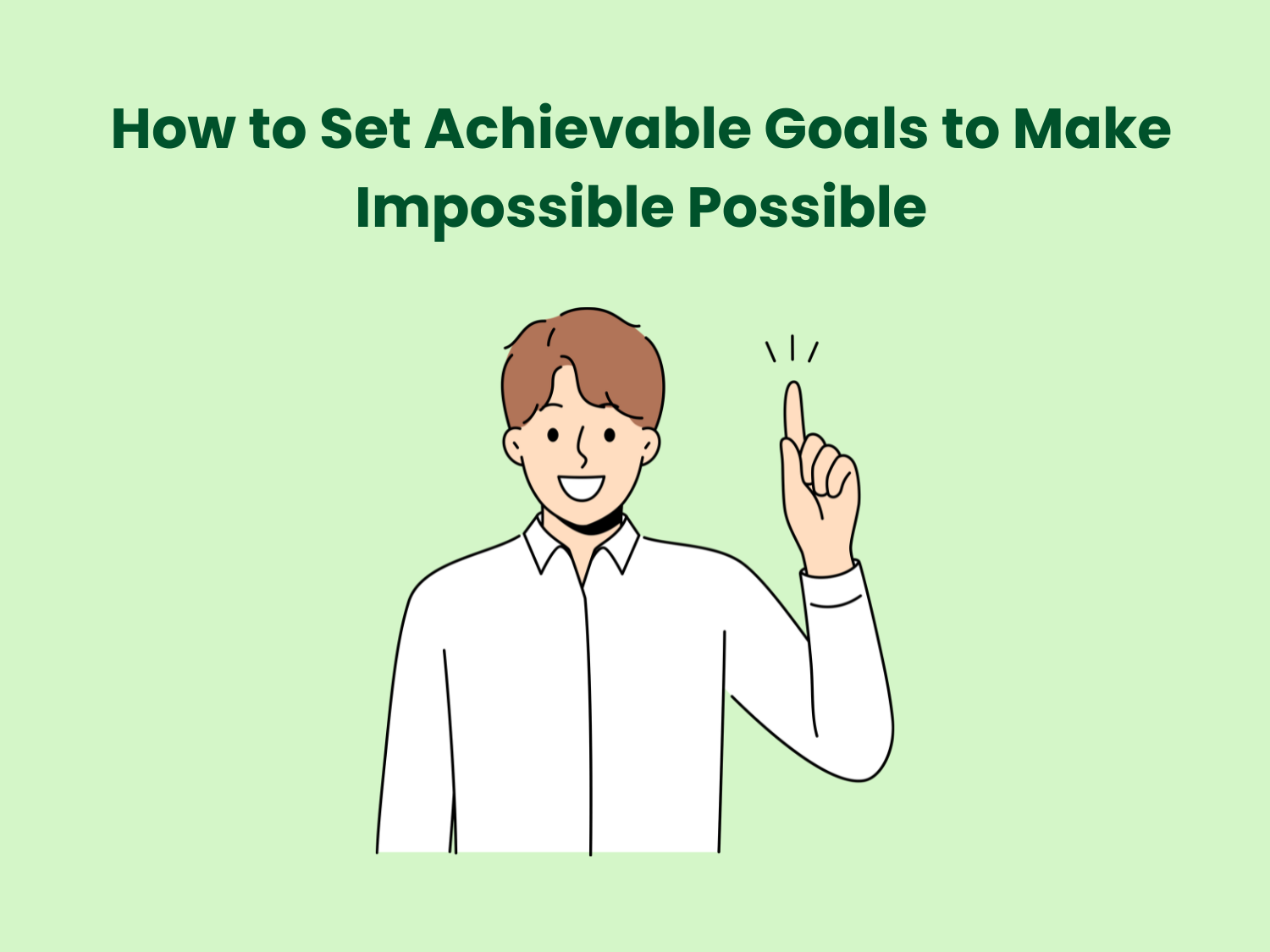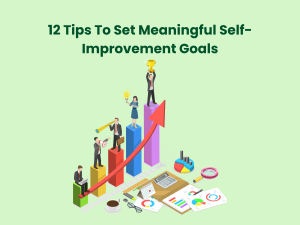We all have grand dreams – get a six figure income, own a mansion, travel the world, impact millions of lives. But huge goals often feel unachievable in reality. The surest way to manifest seemingly impossible goals is to break them down into smaller, achievable goals. Baby steps compound to giant leaps over time.
Why Big Goals Appear Impossible
Massive goals seem out of reach for various reasons:
- Overwhelming in Scale – The end goal is too enormous and far away, making it hard to conceptualize the path.
- Capability Gap – Your current skills and strengths are far below what is required for the goal.
- Undefined Process – You lack clarity and a structured plan on how to get there.
- Timeline Mismatch – The goal requires a long timescale which exceeds your appetite for patient grinding.
- Fear of Failure – Past shortcomings make you doubtful of being capable.
But any goal, however audacious, becomes possible if you streamline it into bite-sized achievable goals.
How to Make Impossible Goals Achievable

Follow these strategies to make daunting goals feel doable:
1. Break it into Milestones
– Segment an intimidating goal into smaller sub goals and milestones. These become short-term objectives to focus on.
– Start with urgent targets nearest to you. Crossing mini-finish lines builds confidence and momentum.
– Plan milestones out logically so achieving each step moves you closer to the ultimate goal.
For example, writing a book feels daunting. But writing 500 words a day, adding up to chapters, feels very achievable.
2. Focus on What You Can Do Now
– Look only at the next immediate milestone instead of the distant goal.
– Improving daily actionable tasks evolves capabilities to ultimately accomplish the bigger objective.
– The goal feels impossible when viewed as a whole. But individual steps are easy. Sequence enough steps and you’ll get there.
3. Learn as You Go
– Most massive goals require new skill sets. Don’t expect to have all capabilities on day one.
– Pursuing a goal itself builds the necessary strengths over time through learning and experience.
– Knowledge gaps shouldn’t hold you back if you commit to steady upskilling.
4. Adjust Timelines
– Impossible goals often have unrealistic deadlines that force abandonment.
– Be flexible with time frames. Move target dates if needed, but keep the endpoint fixed.
– Some goals may take years or decades. Making lifelong commitments sets you on the right trajectory.
With the right framework, no goal is impossible. Difficult yes, but achievable when strategically addressed.
Setting Achievable Goals in Key Areas
Big goals become digestible by applying SMART principles where goals are Specific, Measurable Achievable, Relevant and Time-bound.
Here are some examples of setting achievable goals:
Career Goals
– Don’t attempt to be the CEO immediately. Gain leadership capabilities by first managing a team.
– Before starting a business, work for a successful company in that industry to learn the ropes.
– Target doubling your salary in 10 years. Break it down by aiming for a 10% increment annually.
Health and Fitness Goals
– Don’t try running a full marathon right away. Build towards it by first doing 5Ks then 10Ks.
– Losing 50 pounds quickly is unrealistic. Lose 6 pounds first. Repeat. Smaller targets create big results.
– If you can’t do a single pull up, start with easier progressions like flexed arm hangs until you have the strength.
Financial Goals
– Pay off an entire $100,000 mortgage rapidly by prepaying $500 extra monthly.
– Saving $2 million for retirement in 25 years breaks down to saving $25,000 annually first.
– Reduce your shopping budget from $1000 to $800 monthly by cutting out non-essentials first.
Personal Growth Goals
– Writing a book seems impossible. Start by writing 500 words a day. After a year you’ll have a manuscript.
– If public speaking petrifies you, join toastmasters. Gain confidence by starting with 1 minute speeches.
– Learning the piano feels daunting. Break it down by practicing 20 mins daily on scales first to build dexterity. Master a few basic pieces.
Relationship Goals
– Don’t expect to go from estranged siblings to close confidantes overnight. Start by texting each week to slowly reconnect.
– If you want a loving marriage, don’t expect instant chemistry on the first date. Give enough dates to build understanding.
– Improving work relationships requires consistency. Set a goal like having a friendly chat with colleagues every day.
Making the Impossible Possible
At the end of the day, don’t let the scale of a goal determine your self-concept or limit your potential. As Wayne Dyer said – “Don’t die with your music still in you.” Tap into the intrinsic motivation that attracted you to the goal originally. Keep chipping away at milestones, progress will compound. Stay patient but persistent. Focus on the next step, not the entire staircase. And remember – anything is achievable if broken down into sufficiently small steps.
FAQ About Achievable Goals
Why do big goals seem impossible to achieve?
Massive goals get overwhelming due to their scale, long timeframes, our current capabilities versus what is required, and fear of failure. Breaking them into smaller milestones resolves this.
What if I can’t meet my milestones consistently?
Review if the goal is truly aligned with your inner drivers and strengths. If yes, reconsider your timelines and metrics. Adjust them to a more gradual but steady path.
How small should achievable goals be?
Milestones should stretch your abilities but still be within possibility if you exert focused effort. Build confidence with a series of successes. Increase challenge progressively.
What if I achieve the milestones but not the big goal?
Celebrate hitting milestones sincerely. Even if the mega goal wasn’t met, achieving smaller targets would have grown your capacities. Learn lessons and retry or reframe the larger goal.
Won’t focusing on milestones lose sight of the main goal?
Occasionally relate your milestones back to the central goal for perspective and motivation. But most energy should be on the immediate target. Balance zooming in and zooming out.
Summary
In summary, fragmented focus and persistent perseverance will make any impossible goal achievable over time. Keep a telescope on the destination but drive looking only through the windshield.



